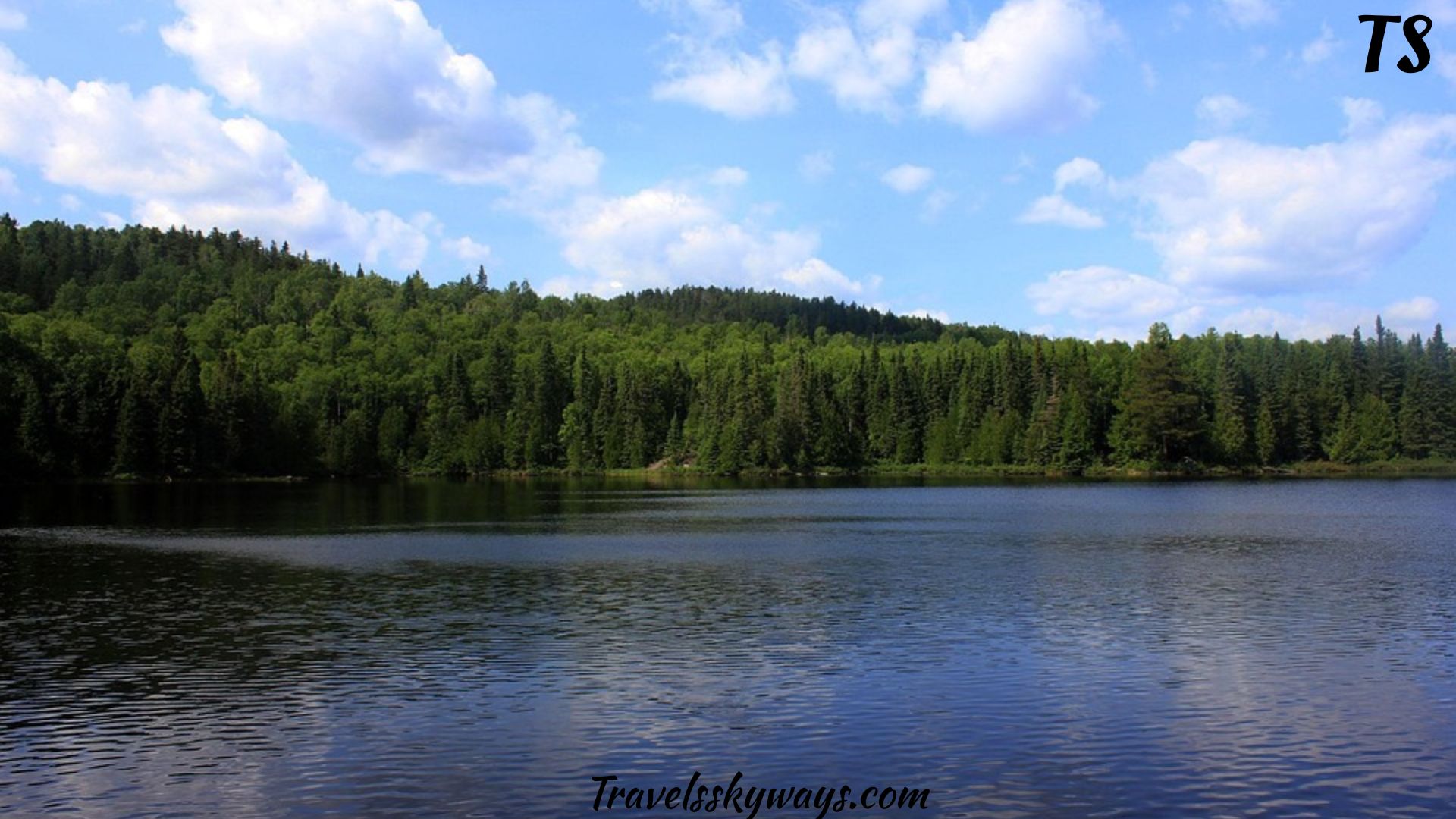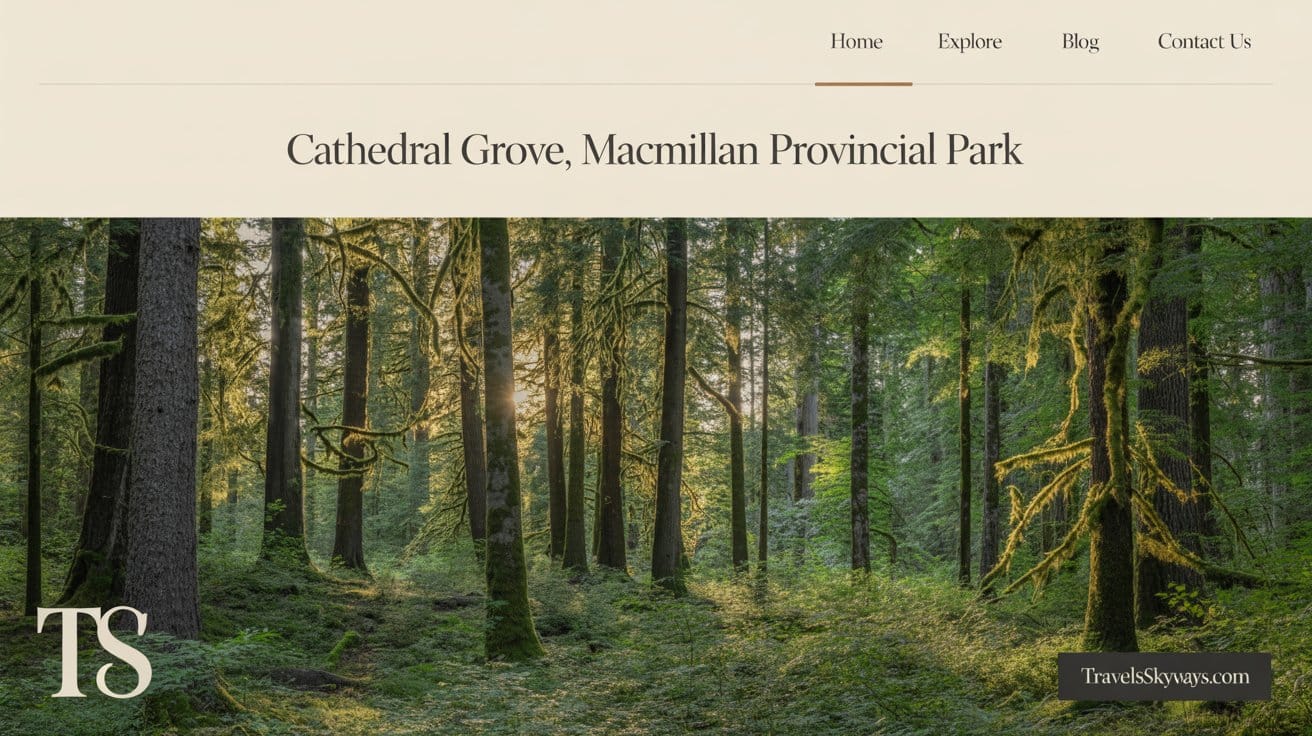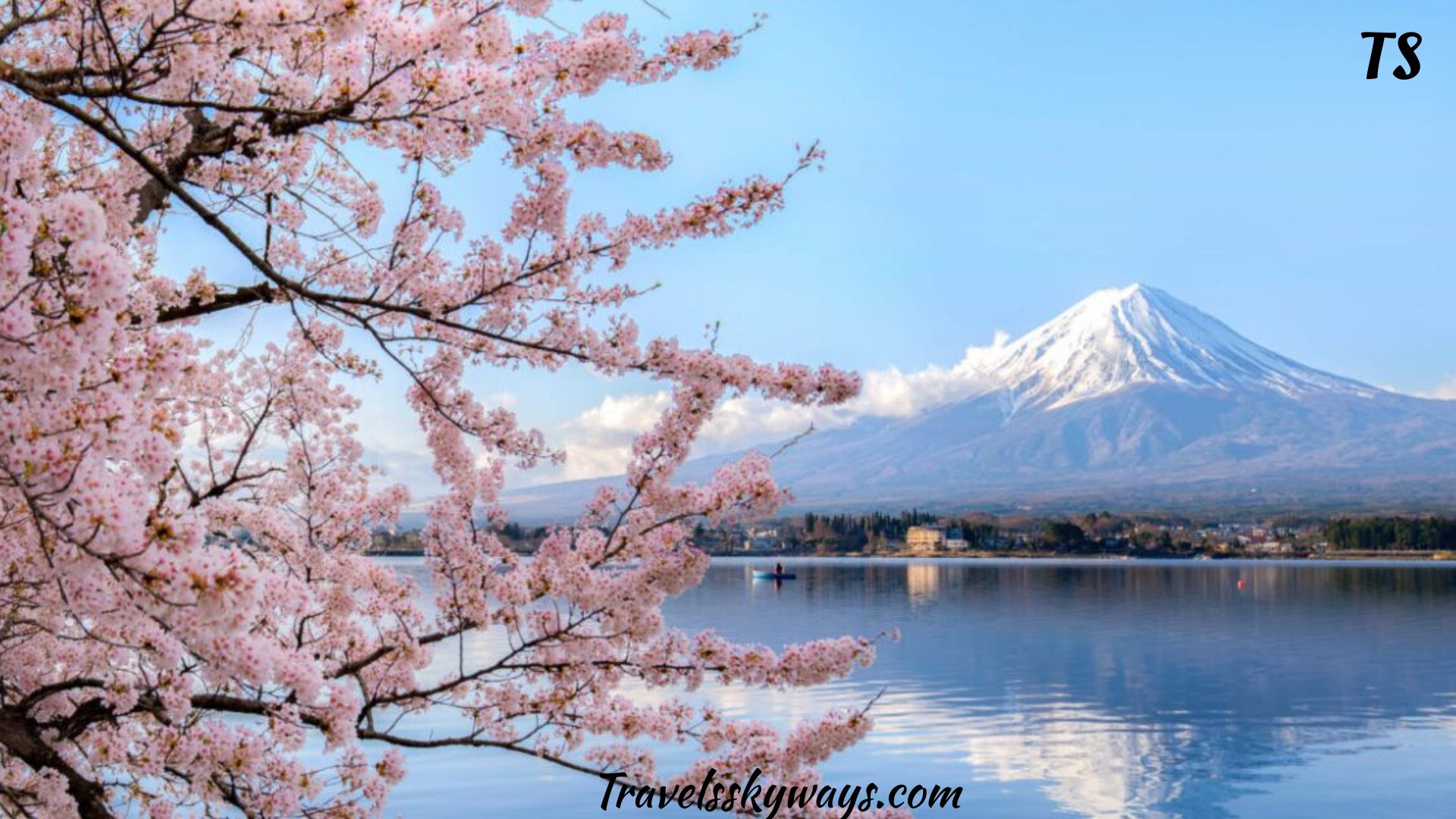
Do you dream of a journey where the ancient temples, the neon cities, and the delicious food come together? A one-week Japan itinerary is just that and even more. In no more than a week, set foot in Tokyo, Kyoto, and Osaka, the main attractions of Japan, marvel at the beautiful view of Mt. Fuji, and have a trip over local flavors that will last with you eternally.
Regardless of whether you are a novice traveler, a lover of culture, or a hardcore foodie, Japan offers you a diverse, balanced, and enjoyable experience that does not crowd your time at all. It is the best way to get acquainted with a country that skilfully merges the old with the new.
One Week Japan Itinerary Overview: Your Perfect 7-Day Adventure
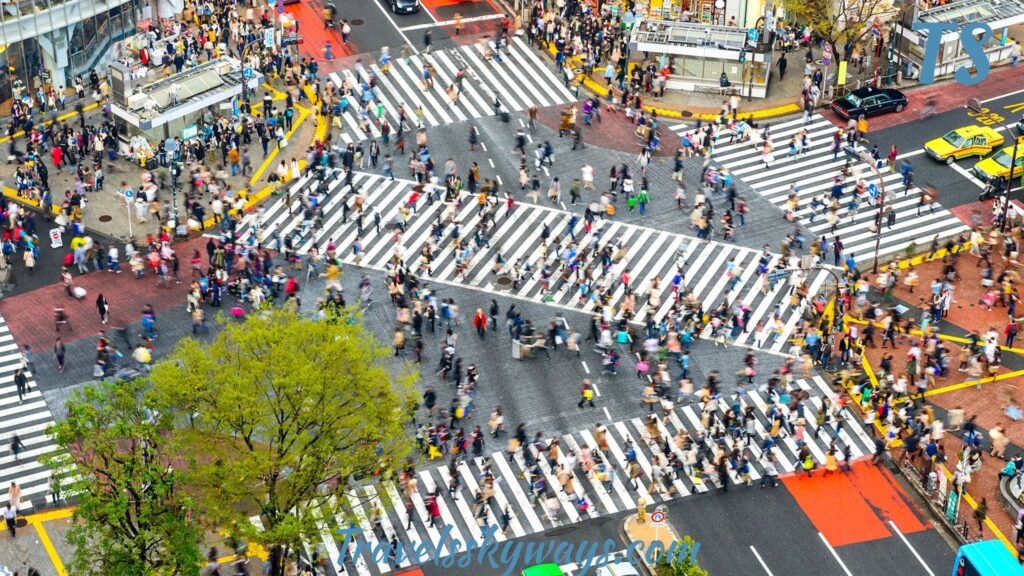
Planning a trip to Japan? This one-week Japan itinerary packs the best sights, culture, and experiences into seven unforgettable days. From the neon-lit streets of Tokyo to the serene temples of Kyoto and the historic charm of Nara, this schedule keeps your journey smooth and exciting.
Day 1: Arrival in Tokyo
Touch down in Tokyo, Japan’s bustling capital. After settling in, explore nearby neighborhoods like Shinjuku or Shibuya for your first taste of vibrant city life.
Day 2: Tokyo City Highlights
Discover Tokyo’s must-see spots: visit the iconic Tokyo Tower, stroll through the trendy Harajuku district, and enjoy sushi at Tsukiji Outer Market. Don’t miss the Meiji Shrine for a peaceful break.
Day 3: Day Trip to Lake Kawaguchi / Mt. Fuji
Escape the city for a day and admire Mt. Fuji from Lake Kawaguchi. This spot offers breathtaking views and perfect photo ops. You can hike, boat, or simply relax by the lake.
Day 4: Shinkansen to Kyoto
Hop on the famous Shinkansen bullet train and race to Kyoto in just 2.5 hours. Enjoy the ride and prepare to dive into Japan’s ancient capital.
Day 5: Explore Kyoto’s Traditional Charm
Spend your day wandering Kyoto’s historic temples like Kinkaku-ji (Golden Pavilion) and Fushimi Inari Shrine with its thousands of red torii gates. Experience a traditional tea ceremony to immerse yourself fully.
Day 6: Nara Stop + Transfer to Osaka
Stop by Nara to see the friendly deer in Nara Park and visit Todai-ji Temple, home to the giant Buddha statue. Later, head to Osaka for lively nightlife and delicious street food.
Day 7: Departure from Osaka or Tokyo
Wrap up your trip with a last stroll or some souvenir shopping before catching your flight home—whether you depart from Osaka or return to Tokyo depends on your schedule.
Quick Summary
| Day | Location | Highlights | Travel Mode |
| 1 | Tokyo | Arrival, explore Shinjuku/Shibuya | — |
| 2 | Tokyo | Tokyo Tower, Harajuku, Meiji Shrine | — |
| 3 | Lake Kawaguchi / Mt. Fuji | Views, hiking, boating | Train + Bus |
| 4 | Kyoto | Shinkansen to Kyoto | Shinkansen (2.5 hrs) |
| 5 | Kyoto | Temples, tea ceremony | — |
| 6 | Nara + Osaka | Deer Park, Todai-ji, Osaka nightlife | Train |
| 7 | Osaka or Tokyo | Departure | — |
Pro Tip: Booking Shinkansen tickets in advance can save you time and guarantee your seat during busy seasons.
This one-week Japan itinerary balances city buzz with peaceful nature and rich history—perfect for first-timers or anyone wanting a taste of everything Japan offers. Ready to start your adventure?
Key Destinations in This Itinerary: Explore Japan’s Must-See Spots

Planning your one-week Japan itinerary means hitting some of the country’s most iconic destinations. Each place offers a unique vibe, from ultramodern cities to serene nature escapes. Here’s a quick guide to the key stops on your trip.
Tokyo: Where Tradition Meets Innovation
Tokyo dazzles with towering skyscrapers and ancient temples side by side. Dive into bustling districts like Shibuya and Akihabara, then find calm at the Meiji Shrine or Ueno Park. The city’s blend of cutting-edge technology and cultural heritage makes it an unforgettable start.
Kyoto: Temples, Tea Houses, and Tranquility
Known as Japan’s spiritual heart, Kyoto boasts over 1,600 temples and countless traditional tea houses. Wander through the iconic Fushimi Inari Shrine or relax in a Zen garden. Kyoto’s peaceful charm perfectly contrasts with Tokyo’s fast pace.
Osaka: Street Food Capital of Japan
If you love food, Osaka’s your paradise. Famous for takoyaki (octopus balls) and okonomiyaki (savory pancakes), the city offers a lively nightlife and friendly locals. Don’t miss Dotonbori’s neon-lit streets and riverside dining.
Mt. Fuji / Lake Kawaguchi: Nature and Scenic Views
For breathtaking scenery, a visit to Mt. Fuji and nearby Lake Kawaguchi is a must. Whether you’re hiking, boating, or simply taking in the panoramic views, this spot showcases Japan’s natural beauty.
Hiroshima (Optional): A Day of History and Reflection
Though a bit off the main path, Hiroshima offers a powerful experience. The Peace Memorial Park and Museum honor history and hope for peace. Many travelers add this as a meaningful day trip.
Nara (Day Trip): Deer Park and the Great Buddha
Just a short ride from Kyoto, Nara is famous for its friendly deer roaming freely and the massive Great Buddha statue inside Todai-ji Temple. It’s an easy day trip filled with culture and nature.
Destination Overview
| Destination | Highlights | Why Visit |
| Tokyo | Temples, skyscrapers, shopping | Blend of tradition & innovation |
| Kyoto | Temples, tea houses, gardens | Historical & peaceful |
| Osaka | Street food, nightlife | Foodie heaven |
| Mt. Fuji / Lake Kawaguchi | Hiking, views, boating | Stunning nature |
| Hiroshima (Optional) | Peace Park, museum | Historical reflection |
| Nara | Deer Park, Great Buddha | Culture + nature |
Did you know? The friendly deer in Nara are considered messengers of the gods and roam freely around the city—so be prepared for some furry encounters!
This lineup of destinations ensures your one-week Japan itinerary delivers diverse experiences, mixing vibrant cities with serene escapes and deep history. Ready to explore?
Must Read: When Is the Worst Time to Visit Japan?
Getting Around Japan: Your Ultimate Travel Guide
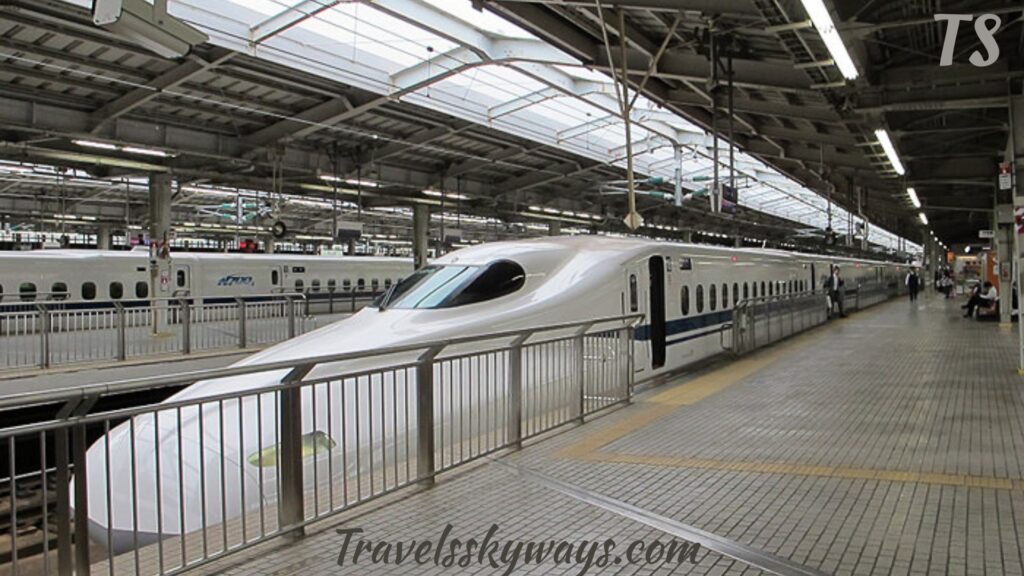
Navigating Japan can seem tricky at first, but with the right info, you’ll move like a pro. Whether you’re hopping on the famous Shinkansen or exploring city streets, here’s everything you need to know about getting around Japan efficiently.
Shinkansen Guide: Seat Classes & Booking Tips
The Shinkansen, or bullet train, is Japan’s high-speed marvel. It zips between cities like Tokyo, Kyoto, and Osaka at speeds up to 200 mph. Here’s a quick rundown of seat classes:
- Ordinary (Standard): Comfortable and affordable, perfect for most travelers.
- Green Car (First Class): More spacious seats, extra legroom, quieter cabins.
- Gran Class (Luxury): Premium service, plush seats, meals included (available on select routes).
Booking Tips:
- Reserve seats during peak travel (holidays, weekends).
- Use JR Pass for unlimited rides on many Shinkansen lines.
- Book online or at stations in advance to guarantee your spot.
Reserved vs. Non-Reserved Seats
Japan’s trains offer two main seating options:
- Reserved Seats: Guaranteed spot, ideal for busy routes or long trips.
- Non-Reserved Seats: First-come, first-served. Usually fine during off-peak times, but can be crowded otherwise.
Virtual IC Cards: Use Your iPhone for Transit
Forget fumbling for cash or paper tickets! Virtual IC cards like Suica and Pasmo let you tap your phone or smart card at gates for smooth travel on trains, buses, and even vending machines.
- Easily recharge online or at stations.
- Link to your iPhone or Android wallet for contactless convenience.
- Accepted in most major cities across Japan.
Local Transportation Within Cities
Cities like Tokyo, Osaka, and Kyoto offer extensive subway and bus networks. Here’s what to expect:
- Subways: Fast, clean, and punctual. Best for covering large areas quickly.
- Buses: Great for reaching spots outside subway range.
- Bicycles: Popular in Kyoto and Nara for scenic, leisurely travel.
Taxis, Car Rentals, and Domestic Flights
- Taxis: Convenient but pricey; good for late-night trips or luggage-heavy travel.
- Car Rentals: Useful if exploring rural areas like Hokkaido or the Japanese Alps. Keep in mind Japan drives on the left.
- Domestic Flights: Efficient for long distances (e.g., Tokyo to Okinawa). Low-cost carriers offer budget-friendly options.
Quick Reference: Getting Around Japan
| Transport Type | Best For | Cost | Tips |
| Shinkansen | Long-distance travel | $$ – $$$ | Book reserved seats in advance |
| IC Cards (Suica/Pasmo) | City travel & convenience | Pay-as-you-go | Link to phone for ease |
| Subways & Buses | Urban exploration | $ | Use apps like Google Maps |
| Taxi | Short, late-night trips | $$$ | Use taxi apps or call directly |
| Car Rental | Rural & flexible travel | $$ – $$$ | An international driver’s license is needed |
| Domestic Flights | Cross-country travel | $$ – $$$ | Book early for discounts |
Traveler’s Tip: The Japan Rail Pass can save you hundreds if you’re traveling between multiple cities. Consider it for your one-week Japan itinerary.
Getting around Japan is part of the adventure. With this guide, you’ll move confidently, spend less time figuring out logistics, and more time soaking in the sights. Ready to hit the rails?
Handling Luggage Like a Pro: Stress-Free Travel in Japan
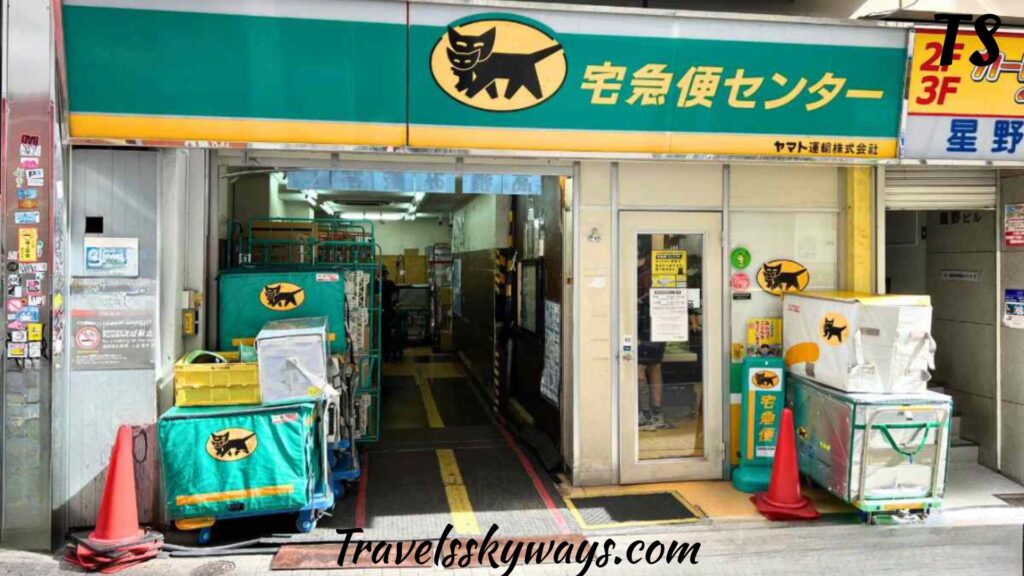
When you’re on the move in Japan, managing your luggage smoothly can make or break your trip. Whether you’re hopping between cities or exploring temples, here’s how to handle your bags like a local and keep your hands free for adventure.
Takuhaibin: Luggage Delivery Services
Takuhaibin (also called takkyubin) is Japan’s brilliant luggage delivery service. You can send your suitcase from one hotel to the next—or even from the airport to your accommodation—usually overnight.
- Why use it? Travel light during train rides and avoid lugging heavy bags.
- Cost: Around ¥1,500–¥3,000 per bag, depending on distance and size.
- How: Drop off your luggage at convenience stores, hotels, or dedicated counters. They deliver directly to your next stop.
Lockers at Train Stations
Most major train stations offer coin-operated lockers in various sizes—perfect for storing bags while you explore.
- Sizes: Small (for backpacks), medium, and large lockers are available.
- Cost: Typically ¥300–¥600 for a day.
- Tip: Popular stations can fill up fast, so arrive early or look for nearby locker spots in shopping centers.
Hotel Storage Options
If you arrive before check-in or have a late flight, most Japanese hotels let you store luggage for free.
- Ask politely at reception—they’re usually happy to help.
- Some ryokans (traditional inns) also offer storage during your stay or after check-out.
Tips for Traveling Light
Packing smart means less hassle, more freedom:
- Choose a carry-on-sized suitcase or backpack.
- Pack versatile clothes you can layer or re-wear.
- Use packing cubes to stay organized.
- Bring essentials only—remember, Japan has plenty of shops if you forget something.
Quick Luggage Handling Summary
| Service | Best Use Case | Cost Range | Notes |
| Takuhaibin Delivery | Between hotels and the airport | ¥1,500–¥3,000 | Convenient & reliable |
| Train Station Lockers | Short-term storage during the day | ¥300–¥600 | Limited availability in busy spots |
| Hotel Storage | Early arrival or late departure | Usually free | Confirm at the check-in desk |
| Travel Light Tips | Packing advice | Free | Less weight = more comfort |
Pro Tip: Use Takuhaibin on Day 3 or 6 of your one-week Japan itinerary to send luggage ahead while you enjoy day trips hands-free.
Mastering luggage handling lets you focus on the magic of Japan without getting bogged down. Travel light, move fast, and enjoy every moment!
Budgeting for a Week in Japan: What You Need to Know
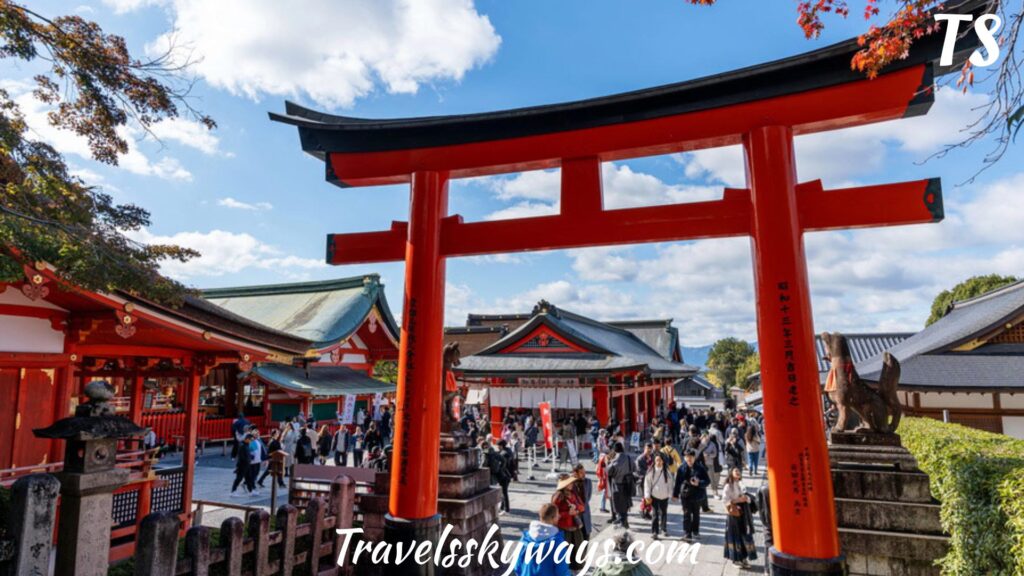
Traveling to Japan doesn’t have to break the bank. With a clear plan, you can enjoy the culture, food, and sights without stressing over costs. Here’s a detailed breakdown of typical expenses and smart ways to save during your one-week Japan itinerary.
Typical Costs: Accommodation, Food, Transport, Attractions
| Category | Budget Traveler (per day) | Mid-Range Traveler (per day) | Notes |
| Accommodation | $30–$60 (hostels, guesthouses) | $80–$150 (business hotels, ryokans) | Book early for the best deals |
| Food | $10–$25 (convenience stores, casual eateries) | $30–$60 (restaurants, sushi bars) | Try local street food like takoyaki |
| Transport | $10–$20 (local trains, buses) | $25–$50 (Shinkansen + city transit) | JR Pass can cover most long-distance travel |
| Attractions | $5–$15 (temples, museums) | $15–$30 (guided tours, special exhibits) | Many shrines are free to enter |
Total Daily Average:
- Budget: ~$55–$120
- Mid-Range: ~$150–$290
Money-Saving Tips
- Use a Japan Rail Pass: For trips involving multiple cities, it can save hundreds.
- Eat like a local: Convenience store meals and street food are tasty and affordable.
- Stay in business hotels or hostels: Clean, comfy, and wallet-friendly.
- Book tickets and tours online in advance: Lock in lower prices and skip lines.
- Visit free attractions: Many shrines, parks, and museums have no entry fee.
- Use IC cards (Suica/Pasmo): Save on transit fares with easy tap-and-go convenience.
Is the Japan Rail Pass Worth It?
The Japan Rail Pass comes in 7, 14, or 21-day options and offers unlimited travel on JR trains, including most Shinkansen routes.
When to buy it:
- If you plan to travel between Tokyo, Kyoto, Osaka, and beyond, the 7-day pass often pays for itself.
- For mostly local city travel, individual tickets may be cheaper.
- Can’t be purchased inside Japan (except in some limited cases)—buy before arrival.
Example:
A round-trip Shinkansen ticket from Tokyo to Kyoto costs about ¥28,000 (~$210). If you’re making this trip plus other day trips, the 7-day JR Pass (~¥29,650/$220) is a bargain.
Quick Budget Summary
| Budget Category | Budget Option | Mid-Range Option | Pro Tips |
| Accommodation | Hostels, guesthouses | Business hotels, ryokans | Book early, check reviews |
| Food | Convenience stores, street food | Casual dining, sushi bars | Try local specialties daily |
| Transport | Local trains, buses | Shinkansen + city passes | Consider the JR Pass for long trips |
| Attractions | Free shrines, parks | Paid museums, tours | Mix free & paid to balance costs |
By understanding costs upfront and using smart strategies, you can experience the best of Japan without overspending. Your one-week Japan itinerary is not just memorable but also budget-friendly! Ready to plan your dream trip?
Arrival & Entry Essentials: Smooth Start to Your Japan Trip
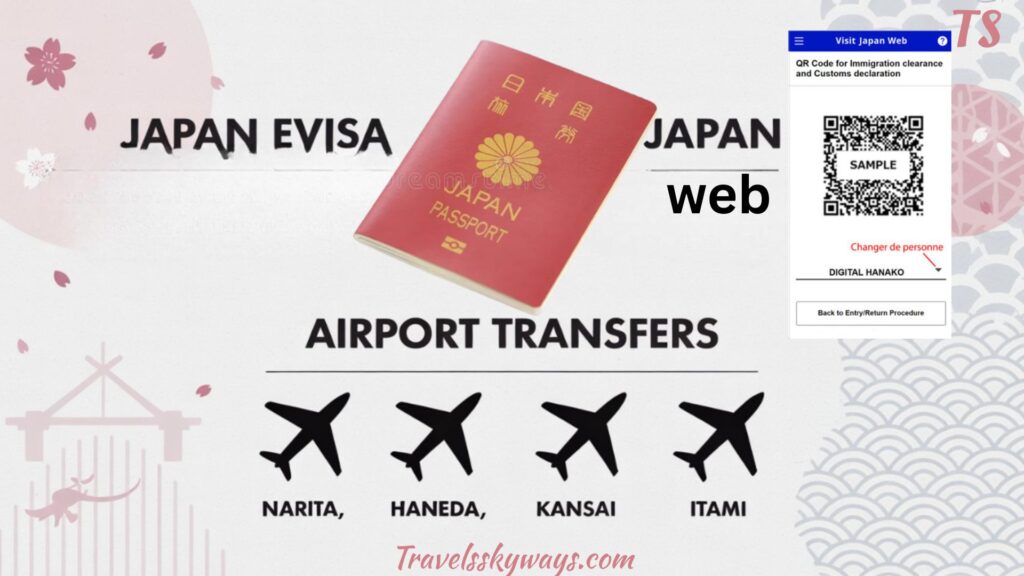
Before you dive into your one-week Japan itinerary, it’s crucial to get your entry and arrival details sorted. From applying for your Japan eVisa to navigating airport transfers, this guide ensures your journey begins stress-free.
Japan eVisa: How to Apply Online
Japan has made travel easier with the eVisa system, allowing eligible travelers to apply online before arrival.
- Who qualifies? Citizens from many countries can apply—check the official Japan Ministry of Foreign Affairs website for the latest list.
- Application process:
- Fill out the eVisa form online.
- Upload required documents like your passport and photo.
- Pay the visa fee online.
- Receive your eVisa approval via email within a few days.
- Fill out the eVisa form online.
- Benefits: Faster entry, less paperwork on arrival, and clear instructions on visa conditions.
Japan Web: Register for Immigration & Customs
To speed up your arrival procedures, use Japan Web, the government’s online pre-registration portal for immigration and customs.
- How it works:
- Complete your immigration and customs declaration online before landing.
- Receive a QR code on your phone or print it out.
- Show it to immigration officers for quicker processing.
- Complete your immigration and customs declaration online before landing.
- Where to register: Visit the Japan Web portal up to 14 days before your flight.
Airport Transfers: Narita, Haneda, Kansai, Itami
Japan’s major airports offer several ways to reach your destination smoothly:
| Airport | Transfer Options | Approximate Time to City Center | Notes |
| Narita (Tokyo) | Narita Express (N’EX), Limousine Bus, Taxi | 60 mins (N’EX) | N’EX connects directly to major Tokyo stations |
| Haneda (Tokyo) | Keikyu Line train, Limousine Bus, Taxi | 20–30 mins | Closer to Tokyo than Narita |
| Kansai (Osaka) | JR Haruka Express, Limousine Bus, Taxi | 50 mins (Haruka) | Connects to Osaka, Kyoto via JR lines |
| Itami (Osaka) | Limousine Bus, Taxi | 30 mins | Domestic flights only |
Pro Tip: Purchase airport transfer tickets in advance online or at airport counters to save time and avoid queues.
Starting your trip with the right paperwork and transfer plans lets you focus on the adventure ahead. This smooth arrival process sets the tone for an amazing one-week Japan itinerary!
When to Visit Japan: Best Seasons for Your One-Week Japan Itinerary
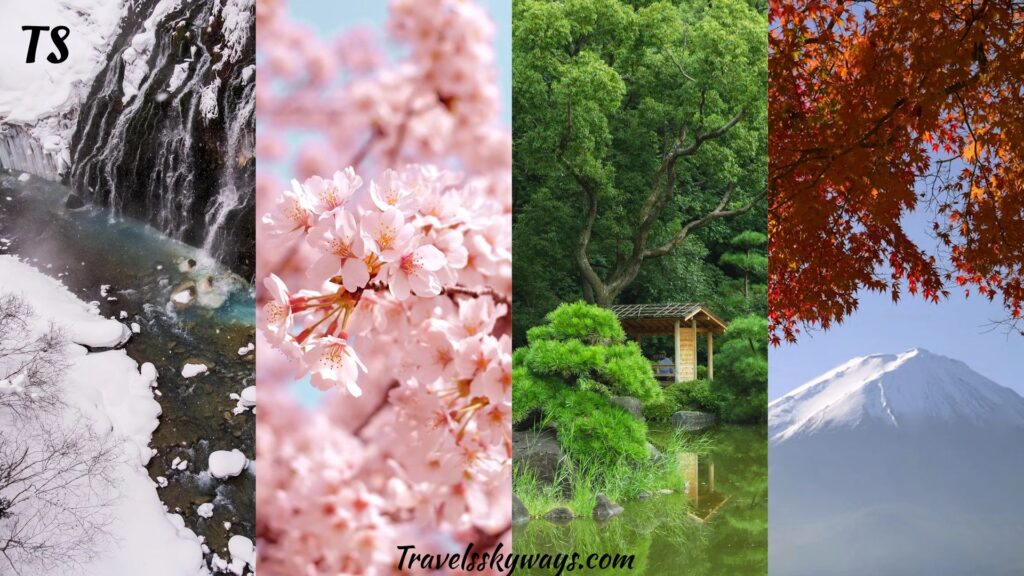
Choosing the right time to visit Japan can make your trip unforgettable. Each season offers unique sights and experiences, so here’s a quick guide to help you pick the best time for your one-week Japan itinerary.
Spring (Cherry Blossoms)
March to early April is when Japan bursts into color with sakura (cherry blossoms). Parks and streets fill with delicate pink petals, creating iconic, breathtaking views.
- Highlights:
- Hanami (flower viewing) picnics in Ueno Park (Tokyo) or Maruyama Park (Kyoto)
- Mild weather, perfect for walking and sightseeing
- Hanami (flower viewing) picnics in Ueno Park (Tokyo) or Maruyama Park (Kyoto)
- Tip: Book accommodations early—spring is one of the busiest travel seasons.
Autumn (Fall Foliage)
From mid-October to early December, Japan’s landscapes transform with fiery reds, oranges, and yellows. Autumn rivals spring in beauty and is slightly less crowded.
- Highlights:
- Visit Kyoto’s Arashiyama Bamboo Grove and Kiyomizu-dera Temple, surrounded by fall colors
- Cooler temperatures and clear skies are ideal for outdoor activities
- Visit Kyoto’s Arashiyama Bamboo Grove and Kiyomizu-dera Temple, surrounded by fall colors
- Tip: Weekdays are best to avoid crowds at popular spots.
Winter (Snow and Onsen)
December to February offers a magical winter wonderland, especially in northern regions like Hokkaido. Plus, Japan’s hot springs (onsen) provide cozy warmth after chilly days.
- Highlights:
- Skiing in Niseko or Hakuba
- Relaxing in traditional onsen towns like Hakone or Beppu
- Skiing in Niseko or Hakuba
- Tip: Winter festivals like the Sapporo Snow Festival (February) are spectacular to experience.
Summer (Festivals & Beaches)
June to August brings warm weather, lively festivals, and beautiful beaches.
- Highlights:
- Colorful fireworks festivals (Hanabi Taikai) across the country
- Hiking in the Japanese Alps and visiting cool mountain retreats
- Beach time in Okinawa or along the Pacific coast
- Colorful fireworks festivals (Hanabi Taikai) across the country
- Tip: June is the rainy season—pack an umbrella and plan indoor activities just in case.
Seasonal Comparison
| Season | Best For | Weather | Crowds | Key Attractions |
| Spring | Cherry blossoms, mild temps | 50–70°F (10–21°C) | High | Hanami picnics, festivals |
| Autumn | Fall colors, outdoor walks | 45–65°F (7–18°C) | Moderate | Leaf viewing, temples |
| Winter | Snow sports, hot springs | 28–45°F (-2–7°C) | Low | Ski resorts, onsen, snow festivals |
| Summer | Festivals, beaches | 75–90°F (24–32°C) | Moderate-High | Fireworks, hiking, beach |
Quote: “Spring is nature’s way of saying, ‘Let’s party!’” — Robin Williams. In Japan, that party comes with cherry blossoms and festivals you won’t want to miss.
No matter when you visit, Japan offers unforgettable moments. Just match the season to your interests and get ready for a rich, vibrant adventure on your one-week Japan itinerary!
Practical Tips for First-Time Visitors to Japan: What You Need to Know
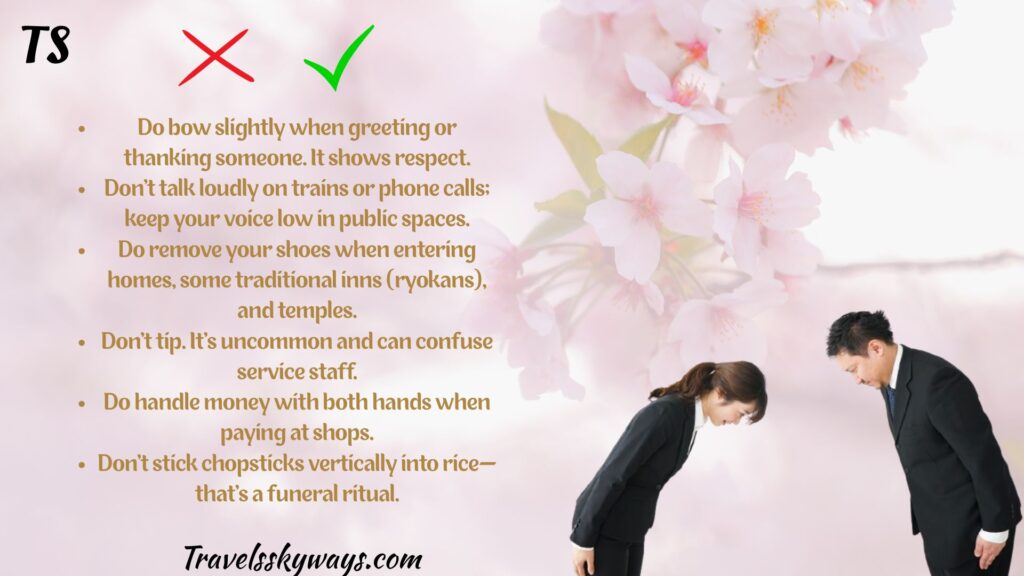
Japan welcomes millions of travelers every year with open arms—but knowing a few key tips can make your trip smoother and more enjoyable. Whether it’s mastering Japanese etiquette or getting connected, this guide covers essential advice for your one-week Japan itinerary.
Japanese Etiquette: Do’s & Don’ts
- Do bow slightly when greeting or thanking someone. It shows respect.
- Don’t talk loudly on trains or phone calls; keep your voice low in public spaces.
- Do remove your shoes when entering homes, some traditional inns (ryokans), and temples.
- Don’t tip. It’s uncommon and can confuse service staff.
- Do handle money with both hands when paying at shops.
- Don’t stick chopsticks vertically into rice—that’s a funeral ritual.
Useful Japanese Phrases
Learning a few simple phrases goes a long way:
| English | Japanese (Romaji) | Pronunciation Hint |
| Hello | Konnichiwa | kon-nee-chee-wah |
| Thank you | Arigatou (gozaimasu) | ah-ree-gah-toh (go-zai-mas) |
| Excuse me / Sorry | Sumimasen | soo-mee-ma-sen |
| Yes | Hai | hi |
| No | Iie | ee-eh |
| Where is ___? | ___ wa doko desu ka? | ___ wah doh-koh dess kah |
| Please | Onegaishimasu | oh-neh-gai-shee-mas |
Tourist Info Centers: Your Best Friend in Japan
Almost every major train station and tourist hotspot has an Information Center staffed by English-speaking helpers.
- Get maps, brochures, and advice on local attractions.
- Buy discount tickets or book tours.
- Ask for help with directions or transport.
They’re a lifesaver if you get stuck or want insider tips.
Internet & SIM Cards
Staying connected is easy with Japan’s reliable internet.
- Pocket Wi-Fi: Rent before arrival for unlimited data on multiple devices.
- SIM Cards: Available at airports and electronic stores; good for solo travelers with unlocked phones.
- Free Wi-Fi: Found in many cafes, hotels, and stations, but spotty in rural areas.
Safety & Cleanliness Tips
Japan is one of the safest countries worldwide, but here are quick tips to stay hassle-free:
- Always carry a copy of your passport (some hotels require it).
- Use trash bins sparingly—Japan encourages carrying your trash until you find one.
- Stay alert but don’t worry excessively; violent crime is very rare.
- Follow local rules for recycling and waste separation.
Quote: “When in Rome, do as the Romans do.” In Japan, a little respect and preparation unlock the warm hospitality behind the culture.
With these practical tips, your one-week Japan itinerary will flow effortlessly. You’ll connect better with locals, navigate easily, and enjoy every moment of your adventure. Ready to dive in?
What (and Where) to Eat in Japan: A Delicious Guide for Your One-Week Japan Itinerary
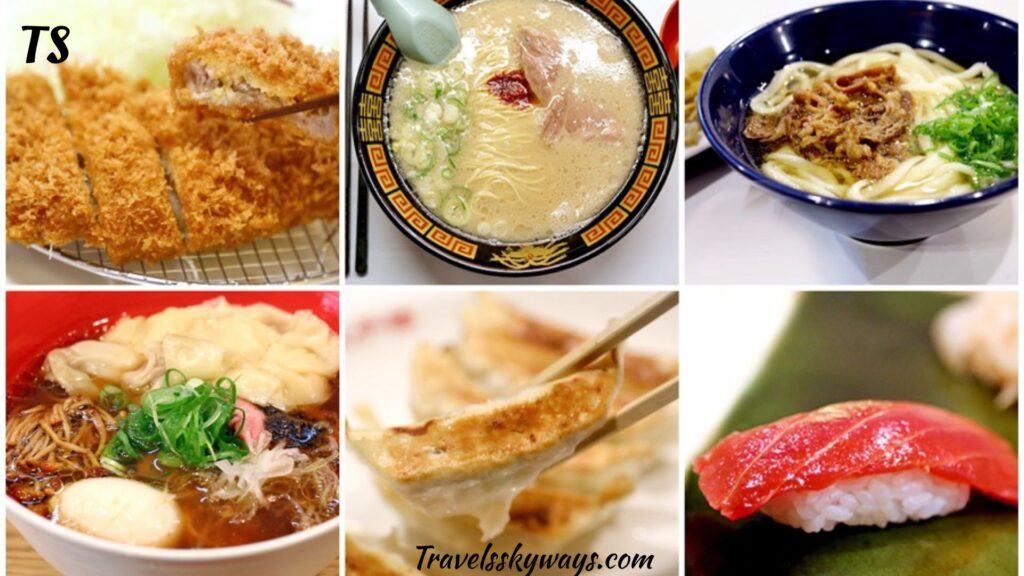
Japan is a food lover’s paradise, packed with flavors that vary by city and culture. From Tokyo’s famous ramen to Osaka’s street food delights, here’s where and what you absolutely need to try—plus handy tips on convenience store hacks, dietary options, and dining manners.
Must-Try Dishes by City
| City | Signature Dish | Description | Where to Find It |
| Tokyo | Ramen | Rich, savory broth with noodles and toppings | Ichiran, Ippudo, or local ramen shops |
| Osaka | Takoyaki | Octopus-filled crispy ball-shaped snacks | Street vendors in the Dotonbori district |
| Kyoto | Kaiseki | Elegant multi-course traditional meal | High-end restaurants & ryokans |
| Hiroshima | Okonomiyaki | Savory pancake layered with cabbage, meat, and sauce | Okonomimura food theme park |
| Nara | Kakinoha-zushi (persimmon leaf sushi) | Pressed sushi wrapped in persimmon leaves | Specialty shops and local markets |
Convenience Store Food Hacks
Japanese convenience stores like 7-Eleven, FamilyMart, and Lawson offer surprisingly tasty, budget-friendly meals. Look for:
- Onigiri (Rice Balls): Quick, filling, and come with various fillings like salmon, pickled plum, or tuna mayo.
- Bento Boxes: Pre-packed meals with rice, meat, veggies, and pickles.
- Instant noodles and snacks: Perfect for late-night cravings or picnics.
- Hot snacks: Fried chicken (karaage), croquettes, and steamed buns.
Pro tip: Heat your meal using the in-store microwaves for a warm, fresh experience.
Vegetarian & Halal Options
Japan’s food culture traditionally focuses on seafood and meat, but vegetarian and halal-friendly options are growing:
- Vegetarian:
- Look for Shojin Ryori (Buddhist temple cuisine) in Kyoto.
- Many ramen shops offer vegetable broth or tofu toppings.
- Use apps like HappyCow to find vegetarian-friendly spots.
- Look for Shojin Ryori (Buddhist temple cuisine) in Kyoto.
- Halal:
- Cities like Tokyo and Osaka have halal-certified restaurants.
- Mosques often share dining guides.
- Street food vendors in Osaka sometimes offer halal takoyaki.
- Cities like Tokyo and Osaka have halal-certified restaurants.
Restaurant Etiquette
Dining in Japan is as much about respect as it is about food. Keep these tips in mind:
- Wait to be seated; don’t just grab a table.
- Say “Itadakimasu” before eating and “Gochisousama” after finishing to express thanks.
- Avoid tipping—excellent service is standard.
- Don’t stick chopsticks upright in rice; instead, rest them on the holder.
- Slurping noodles is polite and shows appreciation!
Quote: “Food is the ingredient that binds us together.” In Japan, eating is an experience that connects you to the culture and its people.
This tasty roadmap ensures your one-week Japan itinerary feeds both your appetite and your soul. Ready to savor the flavors of Japan?
Shopping in Japan: Your Guide to Tax-Free Deals, Souvenirs, and Top Spots
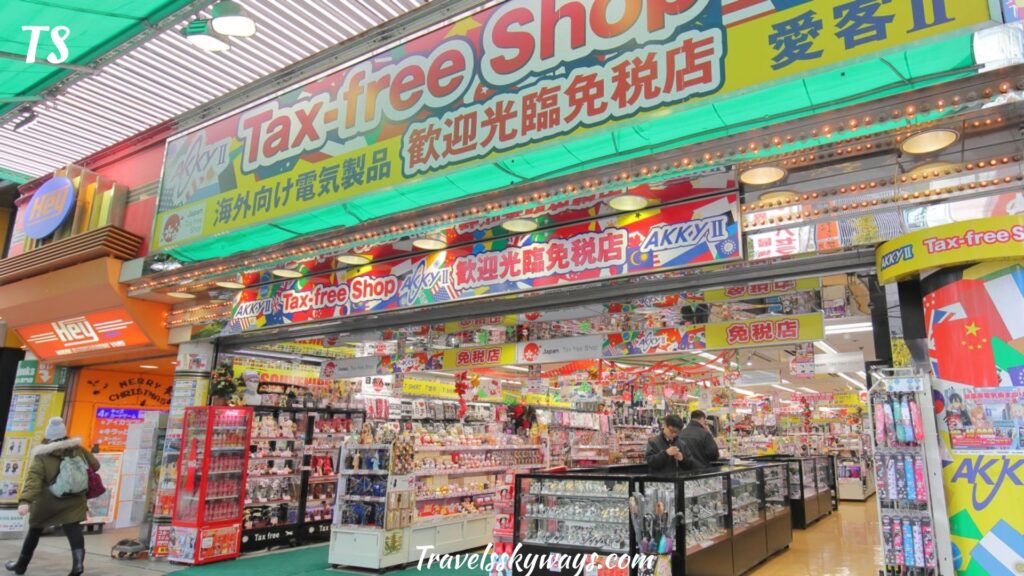
Exploring Japan isn’t just about sightseeing—it’s also a shopper’s dream. From high-tech gadgets to traditional crafts, you’ll find unique treasures everywhere. Here’s how to shop smart, save money with tax-free shopping, and pick the best souvenirs during your one-week Japan itinerary.
Tax-Free Shopping: How It Works
Japan offers tax-free shopping for tourists, letting you save the 10% consumption tax on eligible items.
- Who qualifies? Foreign visitors staying less than six months.
- Where to shop? Look for stores with a “Tax-Free” sign—department stores, electronics shops, and souvenir stores.
- How to claim:
- Present your passport (not a photocopy) at checkout.
- Spend a minimum amount (usually ¥5,000) on general goods or consumables separately.
- The tax will be deducted immediately or refunded at the airport, depending on the store.
- Present your passport (not a photocopy) at checkout.
- Important: Keep receipts and follow customs rules when leaving Japan.
Souvenirs Worth Buying
| Souvenir | Description | Best City to Buy |
| Matcha (Green Tea) | High-quality powdered tea, famous in Kyoto | Kyoto |
| Kokeshi Dolls | Handcrafted wooden dolls with unique designs | Tohoku region & souvenir shops |
| Japanese Knives | Regional sweets and treats are beautifully packaged | Tokyo, Osaka (specialty stores) |
| Omiyage (Local Snacks) | Regional sweets and treats beautifully packaged | Everywhere |
| Yukata & Furoshiki | Traditional cotton robes and wrapping cloths | Kyoto |
| Electronics & Gadgets | Latest tech and accessories | Akihabara (Tokyo) |
Best Places to Shop: Tokyo, Osaka, Kyoto
| City | Top Shopping Areas | What to Expect |
| Tokyo | Ginza, Shibuya, Akihabara | Luxury brands, cutting-edge tech, pop culture goods |
| Osaka | Shinsaibashi, Namba, Dotonbori | Trendy fashion, street food stalls, quirky shops |
| Kyoto | Nishiki Market, Teramachi Street | Traditional crafts, local foods, souvenir shops |
Pro Tip: Plan shopping trips in the afternoon or evening when stores often offer special promotions and seasonal sales. Shopping in Japan blends tradition with modern flair. With tax savings and unique finds, your one-week Japan itinerary will be even richer with these unforgettable purchases. Ready to fill your bags?
Insider Tips for Maximizing Your Japan Rail Pass on a One-Week Itinerary
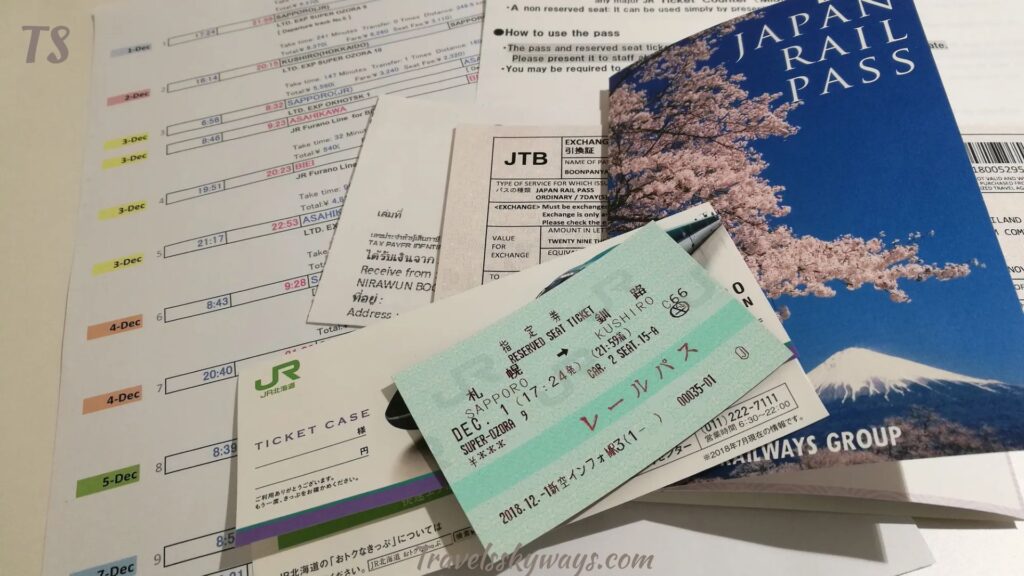
The Japan Rail Pass (JR Pass) can be a game-changer for your one-week Japan itinerary, saving you time and money if used wisely. Here’s how to get the most out of it without wasting a single yen.
Plan Long-Distance Trips Around Your Pass Activation
The JR Pass shines on long rides—like traveling from Tokyo to Kyoto or Osaka to Hiroshima. Activate your pass on the day you start these journeys to get maximum value.
Reserve Seats Early for Popular Routes
Although many Shinkansen trains allow non-reserved seats, booking reserved seats for busy routes ensures comfort, especially during peak seasons like cherry blossom time.
Use JR Pass for Local JR Lines
Your pass isn’t just for bullet trains. It covers many local JR lines within cities such as Tokyo’s Yamanote Line and Osaka’s JR Loop Line—perfect for sightseeing without extra costs.
Combine JR Pass with Regional Passes for Extra Savings
If you plan side trips beyond the main JR network (like Hakone or Nikko), consider regional passes alongside the JR Pass to cover non-JR transport affordably.
Show Your Pass at JR Station Gates—Not at Ticket Machines
You must pass through manned gates by showing your JR Pass to station staff, as the machines don’t accept it. Keep it handy for smooth travel.
Take Advantage of JR Pass Perks
Some JR Pass holders get discounts or free access to ferry rides (like the Miyajima ferry near Hiroshima). Always ask about these extras—they add unexpected value.
Quick Fact: A standard 7-day JR Pass costs around ¥29,650 (~$215 USD). Just one round trip between Tokyo and Kyoto (about ¥28,000) nearly covers the entire cost!
By strategically planning your rail journeys and tapping into the JR Pass benefits, you’ll travel efficiently and save a bundle on your one-week Japan itinerary. Ready to ride the rails like a pro?
How to Experience Authentic Local Culture Beyond Tourist Hotspots in Japan
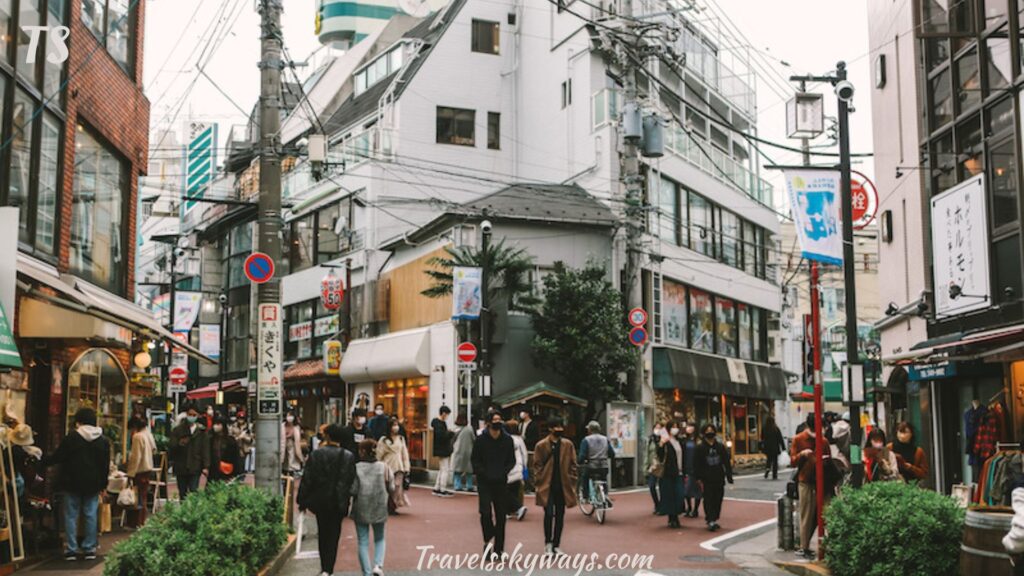
If you want more than just the usual sights on your one-week Japan itinerary, diving into Japan’s authentic local culture will make your trip unforgettable. Here’s how to connect with real Japan beyond the crowded tourist spots.
Visit Local Markets and Neighborhoods
Skip the busy tourist districts and explore places like Shimokitazawa in Tokyo or Nakazakicho in Osaka. These neighborhoods offer indie shops, cozy cafes, and street art that reflect everyday Japanese life. Also, wander through local markets such as Nishiki Market in Kyoto, where you can taste fresh street food and chat with vendors.
Join Community Festivals and Seasonal Events
Japan’s festivals (matsuri) happen year-round and offer a peek into traditional culture. Whether it’s a small shrine festival in a rural town or the famous Gion Matsuri in Kyoto, these gatherings are lively, colorful, and deeply meaningful. Check local event calendars to find one during your visit.
Stay at a Ryokan or Minshuku
Opt for a traditional inn over a hotel to experience authentic hospitality. Ryokans often feature tatami floors, futon bedding, and kaiseki meals, while minshuku are family-run guesthouses that feel like home. These stays connect you with local customs and offer stories you won’t get anywhere else.
Take Part in Hands-On Workshops
Learn a traditional craft like calligraphy, ceramics, or the tea ceremony in smaller studios or community centers. These immersive experiences let you meet locals and understand the cultural significance behind the art.
Use Public Baths (Onsen and Sento)
Visiting an onsen (hot spring) or sento (public bath) is a relaxing way to engage with Japanese daily life. Follow proper etiquette and enjoy the communal atmosphere, which locals treasure as a place to unwind and socialize.
6. Eat Where Locals Eat
Seek out neighborhood izakayas (pubs), family-run ramen shops, or tiny sushi counters away from tourist hubs. These spots serve authentic flavors and often provide a friendlier, less rushed experience.
Quote: “To know a country, eat its food, join its celebrations, and live its traditions.” Japan’s soul shines brightest in its everyday moments.
By stepping off the beaten path and embracing these local experiences, you’ll enrich your one-week Japan itinerary with memories that last far beyond the photos. Ready to see Japan through local eyes?
Bonus: Other Places Worth Exploring Beyond Your One-Week Japan Itinerary
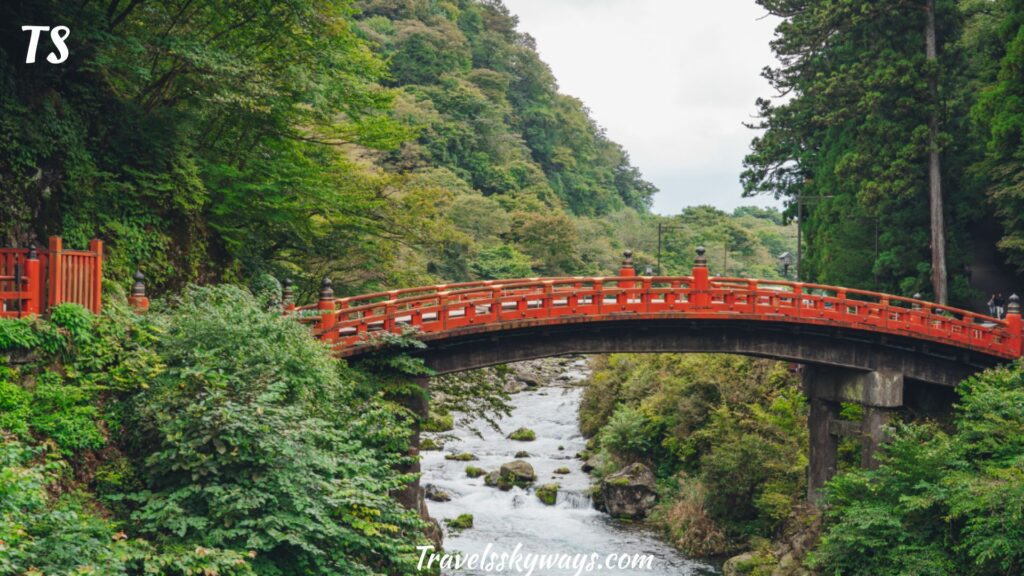
While your one-week Japan itinerary covers the essentials, Japan’s regions offer countless gems just a short trip away—or perfect for a future visit. Here’s a rundown of extra destinations to inspire your next adventure.
Short Trips from Tokyo
| Destination | Highlights | Travel Time from Tokyo |
| Nikko | UNESCO World Heritage shrines, waterfalls, and serene nature | 2 hours by train |
| Hakone | Hot springs, views of Mt. Fuji, Lake Ashi cruises | 1.5 hours by train |
| Kamakura | Giant Buddha statue, coastal temples, charming streets | 1 hour by train |
Short Trips from Osaka
| Destination | Highlights | Travel Time from Osaka |
| Kobe | Famous beef, cosmopolitan port city, Harborland | 30 minutes by train |
| Himeji | Himeji Castle (Japan’s most spectacular castle) | 1 hour by train |
For Next Time: Must-Visit Regions
| Region | Why Visit? | Highlights |
| Hokkaido | Stunning nature, winter sports, and fresh seafood | Sapporo Snow Festival, national parks |
| Kyushu | Volcanoes, hot springs, historic sites | Nagasaki, Beppu, Mt. Aso |
| Naoshima | Contemporary art island with iconic museums | Art installations, Benesse House |
| Shikoku | Pilgrimage routes, tranquil landscapes | 88 Temple Pilgrimage, Naruto whirlpools |
Self-Drive Ideas: Nagano & Beyond
For the adventurous, renting a car opens up off-the-beaten-path exploration:
- Nagano Prefecture: Visit Zenko-ji Temple, enjoy skiing or hiking in the Japanese Alps.
- Kiso Valley: Historic post towns like Tsumago and Magome, perfect for scenic walks.
- Mount Norikura: Drive through mountain passes with spectacular views.
Quote: “Japan isn’t just a country to visit; it’s a story waiting to unfold.” These bonus destinations add exciting chapters to your journey.
Keep these gems in mind when planning your future trips—each offers unique experiences that complement your one-week Japan itinerary beautifully. Ready to explore deeper?
Use your left or right arrow keys or drag and drop with the mouse to change the gradient position. Press the button to change the color or remove the control point.
Use your left or right arrow keys or drag and drop with the mouse to change the gradient position. Press the button to change the color or remove the control point.
Travel Checklist for Your One-Week Japan Itinerary
Before you jet off on your exciting Japan trip, it helps to get organized. Here’s a handy checklist covering what to pack, essential apps to download, common pitfalls to avoid, and a smart timeline for bookings. Nail these, and your trip will flow smoothly!
What to Pack
- Comfortable walking shoes: You’ll do lots of exploring on foot.
- Weather-appropriate clothes: Light layers for spring/fall; waterproof jacket for rainy season.
- Universal power adapter: Japan uses Type A plugs, 100V voltage.
- Portable phone charger: Keep your devices charged on the go.
- Reusable water bottle: Stay hydrated and eco-friendly.
- Travel umbrella: Compact and handy for sudden showers.
- Copies of important documents: Passport, travel insurance, and reservations.
- Medications & basic first aid: Include any prescriptions and common remedies.
Apps to Download
| App Name | Purpose | Platform |
| Google Maps | Navigation & transit info | iOS, Android |
| HyperDia | Train schedules & route planning | iOS, Android |
| Google Translate | Language help, instant camera translate | iOS, Android |
| Japan Official Travel App | Tourist info, events, emergency contacts | iOS, Android |
| Suica / Pasmo App | Manage virtual transit cards | iOS, Android |
| Yelp / Tabelog | Restaurant reviews | iOS, Android |
Common Mistakes to Avoid
- Overpacking: Japan has coin lockers and luggage delivery services; pack light to move easily.
- Ignoring train etiquette: Speak quietly, avoid phone calls, and line up properly.
- Skipping seat reservations on Shinkansen: During busy seasons, reserved seats guarantee a spot.
- Not carrying cash: Many places don’t accept credit cards, especially small shops and temples.
- Forgetting to check store and attraction opening hours: Some close early or have days off.
Suggested Booking Timeline
| Booking | When to Book | Why? |
| Hotels | 2-3 months in advance | Secure the best rates and availability |
| Japan Rail Pass | Before arrival (online purchase) | Only sold outside Japan, saves money |
| Airport Transfers | 1-2 weeks before | Guarantees a seat and a better price |
| Popular Attractions | 1 month ahead | Skip long lines or sell-outs |
Bold Reminder: Planning lets you enjoy the moment without stress. Your one-week Japan itinerary will be smoother and more fun with a little prep.
Packing smart, using the right apps, and booking early means less hassle and more adventure. With this checklist, you’re all set to dive into Japan’s wonders and create memories that last a lifetime!
FAQs
Can I use credit cards in Japan?
While major cities like Tokyo, Kyoto, and Osaka increasingly accept credit cards, cash is still king in many parts of Japan—especially in local restaurants, street markets, and small shops. It’s best to carry yen and withdraw from 7-Eleven or Japan Post ATMs, which accept most international cards.
Is English widely spoken in Japan?
English is spoken at major tourist attractions, hotels, and airports, but less so in local neighborhoods. However, signage is often bilingual, and people are usually helpful and polite, even if they speak limited English. Download a translation app to bridge communication gaps.
What kind of power plug does Japan use?
Japan uses Type A plugs (two flat pins), similar to North America, with a voltage of 100V. However, some devices may charge more slowly due to the lower voltage. Bring a universal adapter and check if your electronics are compatible.
How early should I book bullet train seats?
If you’re traveling during peak seasons like cherry blossom (March–April) or Golden Week (late April–early May), book Shinkansen seats as early as possible—up to a month in advance. Otherwise, booking a day or two before is usually enough. Seat reservations are free with the JR Pass.
Is tipping expected in Japan?
No, tipping is not customary in Japan and can even be confusing. Excellent service is already included in the experience. Instead, show appreciation by saying “Arigatou gozaimasu” (thank you very much) with a smile and a bow.
Conclusion
A well-planned one-week Japan itinerary gives you the perfect mix of adventure, culture, and relaxation. From the buzzing streets of Tokyo to the peaceful temples of Kyoto and the flavorful bites of Osaka, Japan offers something for every type of traveler.
With efficient transport, rich traditions, and unforgettable scenery, it’s easy to fall in love with the country—even in just seven days. Whether you’re visiting for the first time or planning a return trip, this itinerary ensures you make the most of every moment in Japan.

Travels skyways helps you plan your perfect journey with expert tips, destination guides, travel hacks, and budget advice. Whether it’s a quick getaway or a dream vacation, we’re here to guide your adventure from start to finish.




